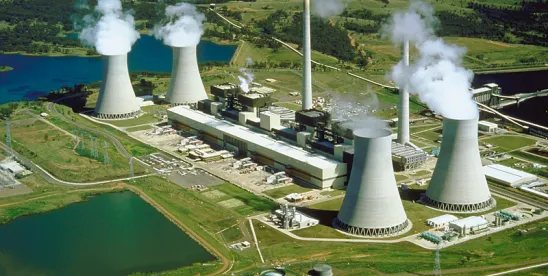Last week the Savannah River Site (“SRS”) in South Carolina, a large nuclear facility owned by the U.S. Department of Energy (“DOE”), went into a lock down after electronic and canine scans of a commercial delivery truck attempting to enter the facility indicated possible explosive residue on the vehicle. Fortunately, the lock down was lifted a few hours later after law enforcement determined that there were no explosives on the truck. The incident nonetheless attracted significant media attention presumably in view of the activities conducted at the facility, which is operated by private companies under contract with the DOE. SRS processes and stores nuclear materials in support of U.S. national defense. It also develops and deploys technologies to treat nuclear and hazardous waste left from the Cold War.
Based on publicly-available information about last week’s incident, SRS contractors did everything right: they screened the vehicle as it approached the facility, prohibited entry and locked the facility down when a potential threat was detected, and called in law enforcement to secure the area and investigate. There is, however, one more thing SRS contractors could have done — and still can do — obtain protection under the SAFETY Act, a post-9/11 risk mitigation program administered by the U.S. Department of Homeland Security (“DHS”) to incentivize the development and deployment of anti-terror technology.
The SAFETY Act promotes the creation and use of anti-terror technologies — like the security measures in place at SRS — by, among other things, eliminating liability for providers and users of such technologies. Specifically, should DHS conclude that an anti-terror technology is effective, has performed as intended, and is safe for its intended use, the DHS determination gives the provider of such technology a rebuttable presumption of immunity from liability should the technology be implicated in tort suits following a terrorist attack. In addition, even if the presumption can be overcome, the SAFETY Act caps third-party liability arising from an act of terrorism for an approved anti-terror technology at the predetermined amount of the terror insurance limits required to be maintained. The SAFETY Act also bars claims for punitive damages, precludes state court litigation, and prohibits pain and suffering claims without proof of physical harm. But these potentially significant liability protections are not automatic: companies must submit a confidential application to DHS and pass a rigorous DHS review process to receive the protections.
We have written extensively about the SAFETY Act, including its value to energy sector, which has thus far not availed itself of the Act as a powerful risk mitigation tool. We also recently wrote about the House Subcommittee on Cybersecurity, Infrastructure Protection, and Security Technologies’ current initiative to amend the SAFETY Act to include protection not only for acts of terrorism, but also for “qualifying cyber incidents,” explaining that such an expansion would greatly benefit the energy sector, among others. Last week’s event at SRS, against the backdrop of recent security incidents at other facilities like the Metcalf Substation in California, is a stark reminder that U.S. energy sector and its critical infrastructure are prime targets for terrorist attacks, and such an attack could have significant consequences, including third-party liability.
Although the nuclear industry enjoys some degree of protection via the Price Anderson Act (“PAA”), a legislative scheme that protects nonmilitary nuclear power plants from liabilities resulting from personal injury and property damage, the PAA does not offer complete protection from potential liability associated with an act of terrorism. In particular, the PAA indemnifies operators of nuclear facilities from public liability resulting from a nuclear incident, which is defined as “any occurrence . . . causing . . . bodily injury, sickness, disease, or death, or loss of or damage to property, or loss of use of property, arising out of or resulting from the radioactive, toxic, explosive, or other hazardous properties of source, special nuclear, or byproduct material.” Thus, if, for example, the resulting damage and bodily injury did not arise from the hazardous properties of the nuclear material at the site, the protections of the PAA may not apply to a terrorist attack occurring at a nuclear facility. For instance, had the security incident at SRS not been resolved, and an explosive-laden truck had gained access and detonated at the site, there could have been a devastating loss of life and property damage based solely on the explosion of the truck and the PAA might not apply. This latest event should thus serve as a call to action for members of the energy sector to seriously consider the SAFETY Act as an element of their overall risk mitigation strategy.






 />i
/>i

